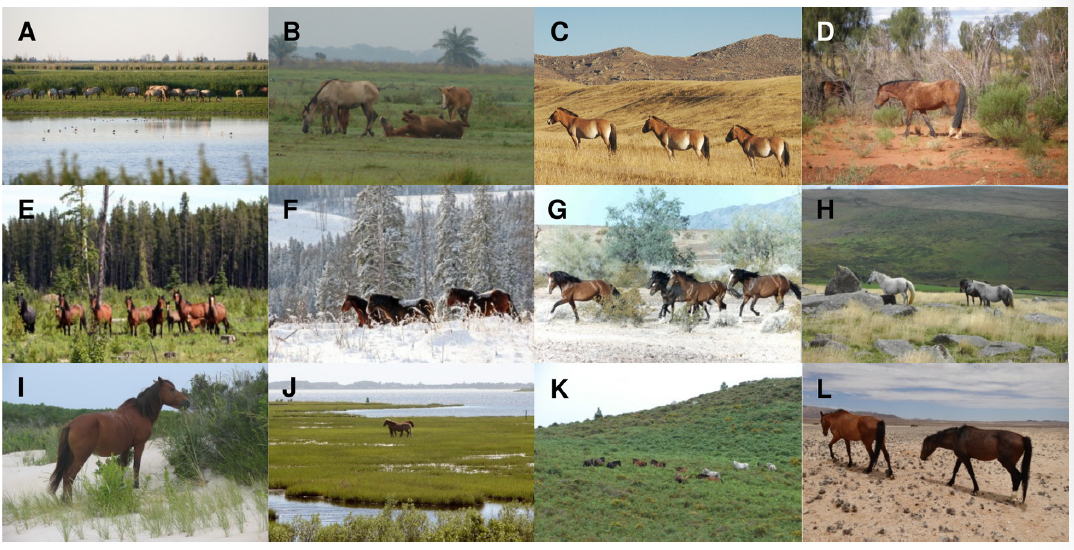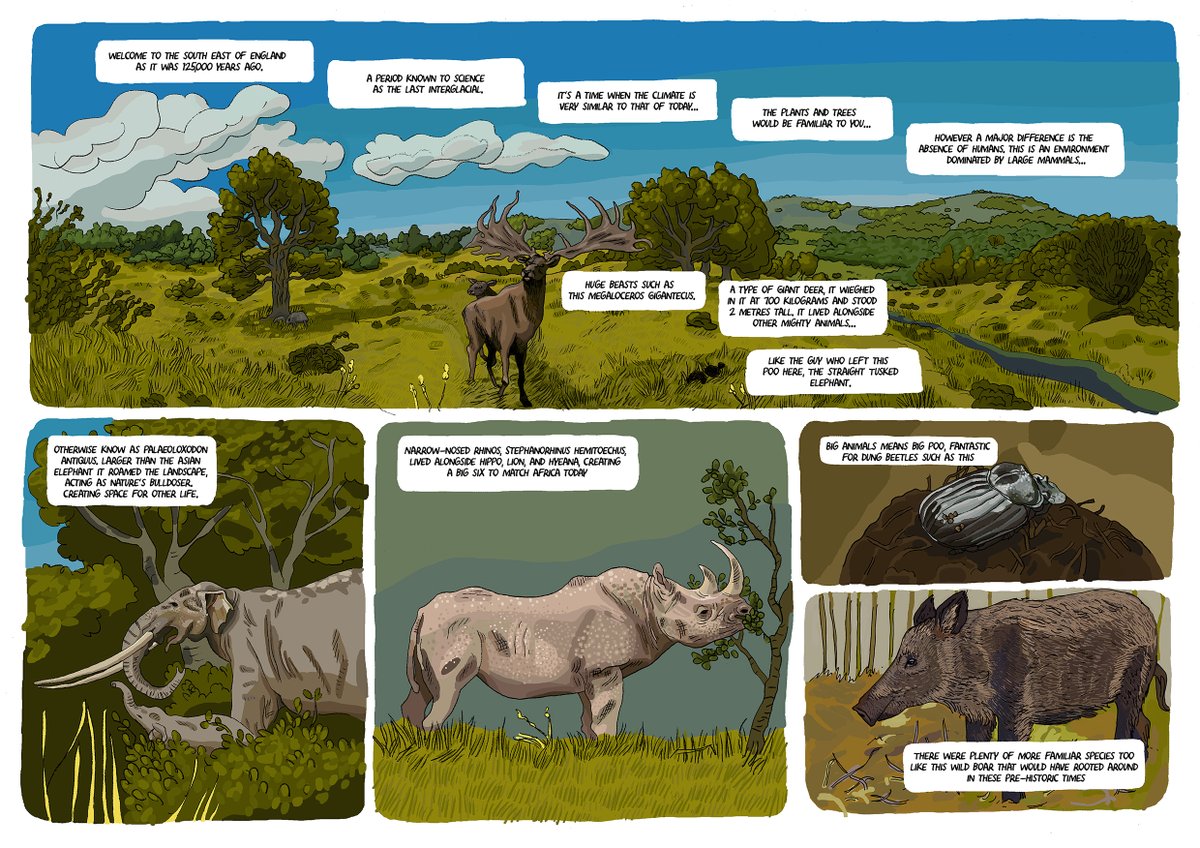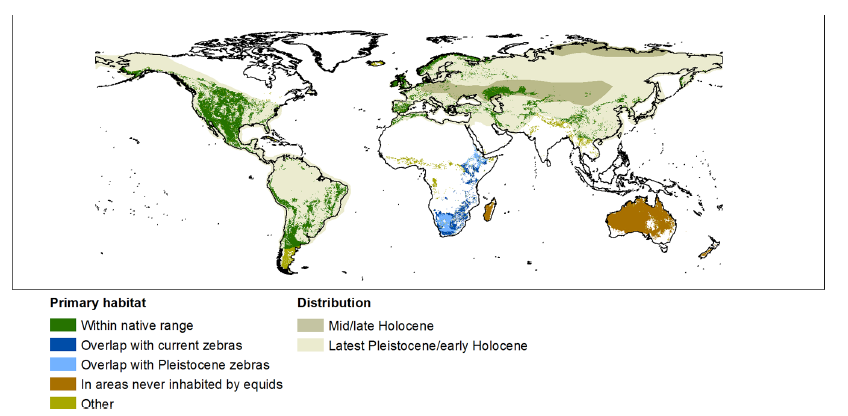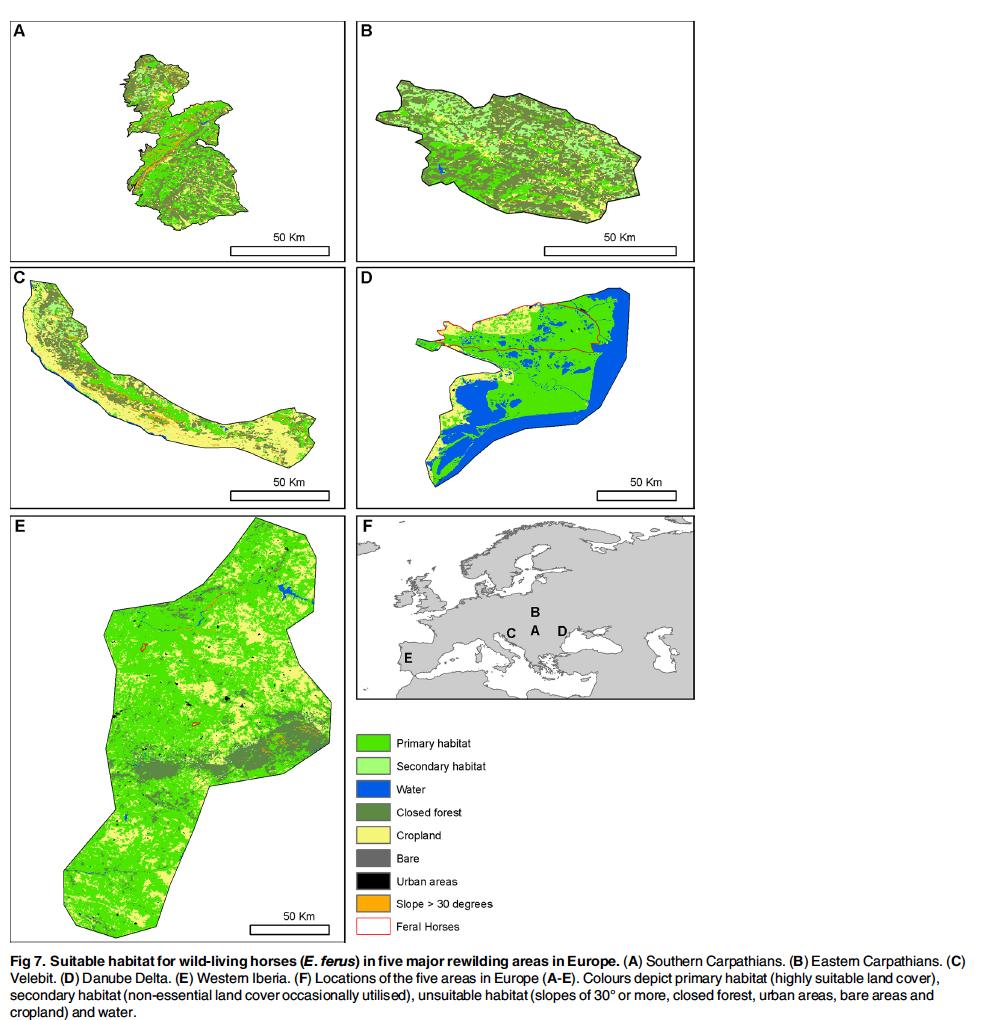1/ Modelling indicates that large areas in North and South America and Eurasia have suitable climate and habitat for #rewilding with wild-living horses. #rewildingscience paper by Pernille Naundrup and @JCSvenning in @PLOSONE 

@JCSvenning @PLOSONE 2/ The scene is set by highlighting the dramatic loss of the biggest animals across much of the world in the last ~100,000 years, with evidence suggesting humans were an important cause.
@JCSvenning @PLOSONE 3/ This loss has fundamentally changed the way many ecosystems work and look! e.g. Big animals can influence vegetation community structure and diversity, long-distance seed dispersal, nutrient cycling and much more!
@JCSvenning @PLOSONE 4/ Check out how southern England might have looked 120,000 years ago when the climate was similar to today and the megafauna were still here! There were giant deer, lions, and elephants in England. It still blows my mind a little :) 

@JCSvenning @PLOSONE 5/ Trophic #rewilding is all about reintroducing these important (keystone) animals into ecosystems that have lost important processes to make them more diverse, complex, functional, healthy, and, let’s face it, a bit more spectacular again!
@JCSvenning @PLOSONE 6/ The horse Equus ferus is a species worth giving some attention to with regard to rewilding. It’s wild ancestor occupied most of the Americas and Eurasia meaning it was a species adapted to many environments.
@JCSvenning @PLOSONE 7/ It evolved in North America 1.1-1.2 million years ago, and then naturally colonised South America and Eurasia about 0.9-0.8 mya, and Africa during the Late Pleistocene. It went extinct in the Americas at the end of the last ice age, but survived until recently in Eurasia.
@JCSvenning @PLOSONE 8/ It was domesticated about 3600 BC, and now there are many wild-living populations of originally domesticated animals living on all continents except Antarctica. This includes large populations in Australia and New Zealand where the horse has not occurred before. 

@JCSvenning @PLOSONE 9/ Horses are important grazers, to which much grassland species are evolved to interact with. Horses are a selective grazers, seeking out preferred grasses, sedges, and herbs, which helps create a mosaic of high and low vegetation, and so varied homes other species.
@JCSvenning @PLOSONE 10/ Horses are more selective grazers compared to cattle and bison. Horses eats shrubs less often, can consume coarse and abrasive grasses and they bite the vegetation much closer to the ground. All this is important for biodiversity and ecosystem processes.
@JCSvenning @PLOSONE 11/ Horses use a wide range of open habitats as well, including: grasslands, steppe, shrub and desert, & can also be found in wetlands, marshes, heathlands, and woodlands. This paper focuses on using Species Distribution Modelling to look suitable areas for rewilding with horses.
@JCSvenning @PLOSONE 12/ The key questions and findings from the paper are as follows:
@JCSvenning @PLOSONE 13/ What is the geographical distribution of suitable climate and habitat for E. ferus worldwide and within its former range? The modelling suggests there is a lot of suitable primary habitat for wild-living horses on the inhabited continents. 

@JCSvenning @PLOSONE 14/ How much suitable habitat for E. ferus occurs within five major rewilding areas in Europe? All 5 @RewildingEurope sites investigated contain abundant primary and secondary habitat for wild-living horses. 

@JCSvenning @PLOSONE @RewildingEurope 15/ Horses are remarkably adaptable. They can survive places where temps get down -44 degrees C and dig through 60cm of snow. But they are not drought adapted nor suited to dense forest. They can survive semi-arid regions by travelling long distances for food and water.
@JCSvenning @PLOSONE @RewildingEurope 16/ The authors indicate the reintroduction of wild-living horses to areas where wild horse occurred during the Pleistocene is unlikely to have negative ecological effects because of a long evolutionary history in these regions.
@JCSvenning @PLOSONE @RewildingEurope 17/ Rewilding with wild-living horses is deemed less suitable in sub-Saharan Africa, Australia and New Zealand, as it is not native to these regions. Sub-Saharan Africa has zebra which ecologically very similar to E. ferus.
@JCSvenning @PLOSONE @RewildingEurope 18/ In Aus and NZ wild-living horses are seen as a non-native pest that threatens agriculture and native habitats, although it is worth noting that both positive and negative effects of native flora have been reported.
@JCSvenning @PLOSONE @RewildingEurope 19/ Some useful data is provided to consider how much space independent wild-living horses need: A minimum viable population is estimated to be between 72-300 ind. Home ranges of breeding bands vary from 1-48 km2, depending on forage and water availability.
@JCSvenning @PLOSONE @RewildingEurope 20/ Bands consist of 2-20 individuals, often 4. Taking this into account it is estimated a minimum viable population might need 18-3,600 km2 (1,800-360,000 ha). However, much smaller areas might also be possible in some circumstances.
@JCSvenning @PLOSONE @RewildingEurope 21/ There is lots to take into account when considering rewilding with a particular species, and horses are no exception. They are clearly an adaptable species that can have important ecosystem effects. They will also interact with people, predators, parasites, and competitors.
@JCSvenning @PLOSONE @RewildingEurope 22/ But ultimately, the paper makes the case that there is considerable potential to rewild with wild-living horses. Many thanks to Pernille Naundrup and @JCSvenning for an interesting paper. Well worth reading if you’re interested in #rewilding and horses.
@JCSvenning @PLOSONE @RewildingEurope 23/ It is published in @PLOSONE who have recently put out a call for a collection on #rewilding and restoration, more details are available here: collections.plos.org/s/rewilding-re…
@JCSvenning @PLOSONE @RewildingEurope 24/ The paper is available here: journals.plos.org/plosone/articl… @OwenMiiddleton @Painting_Nature @DandoTom
• • •
Missing some Tweet in this thread? You can try to
force a refresh









